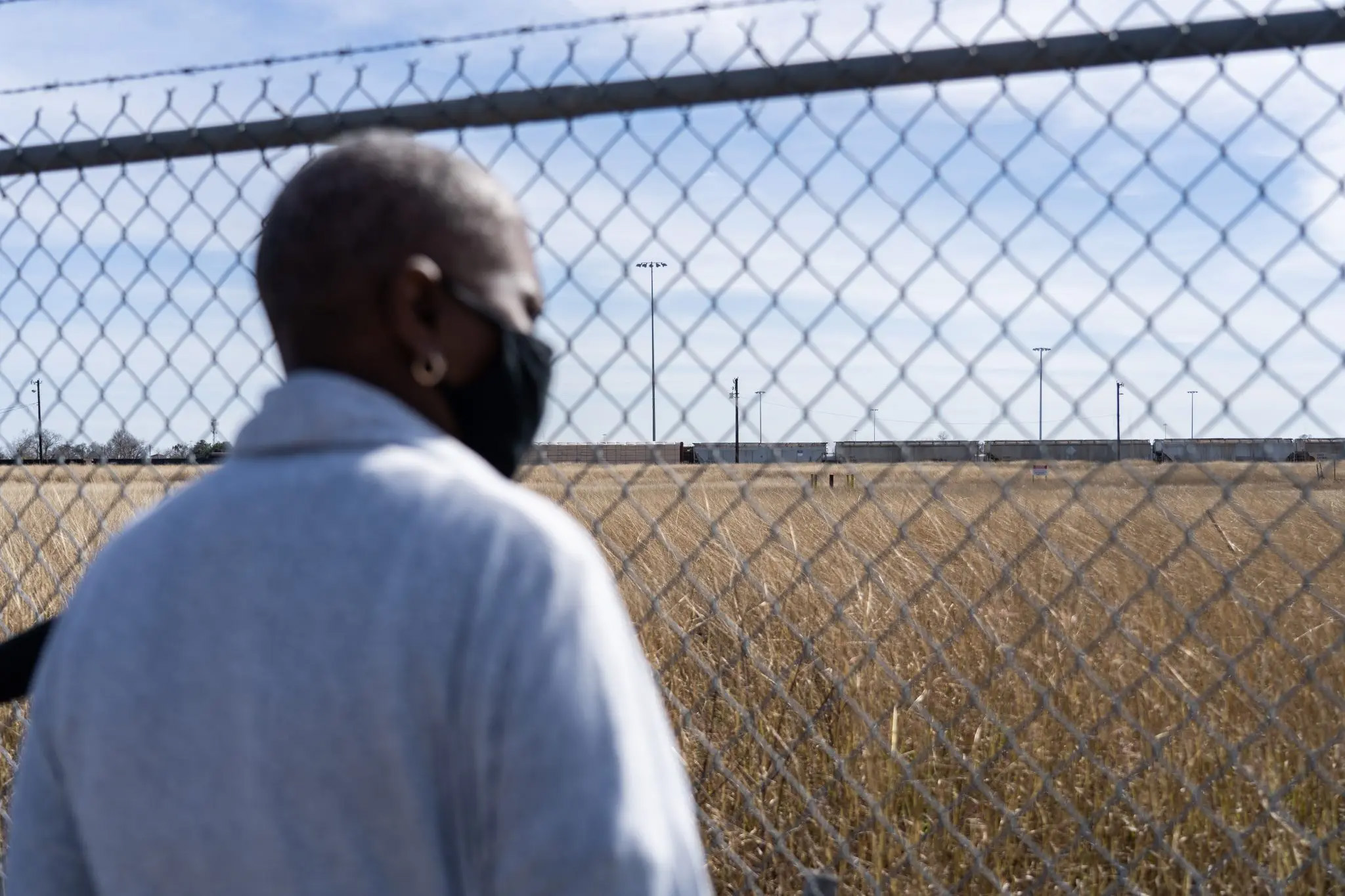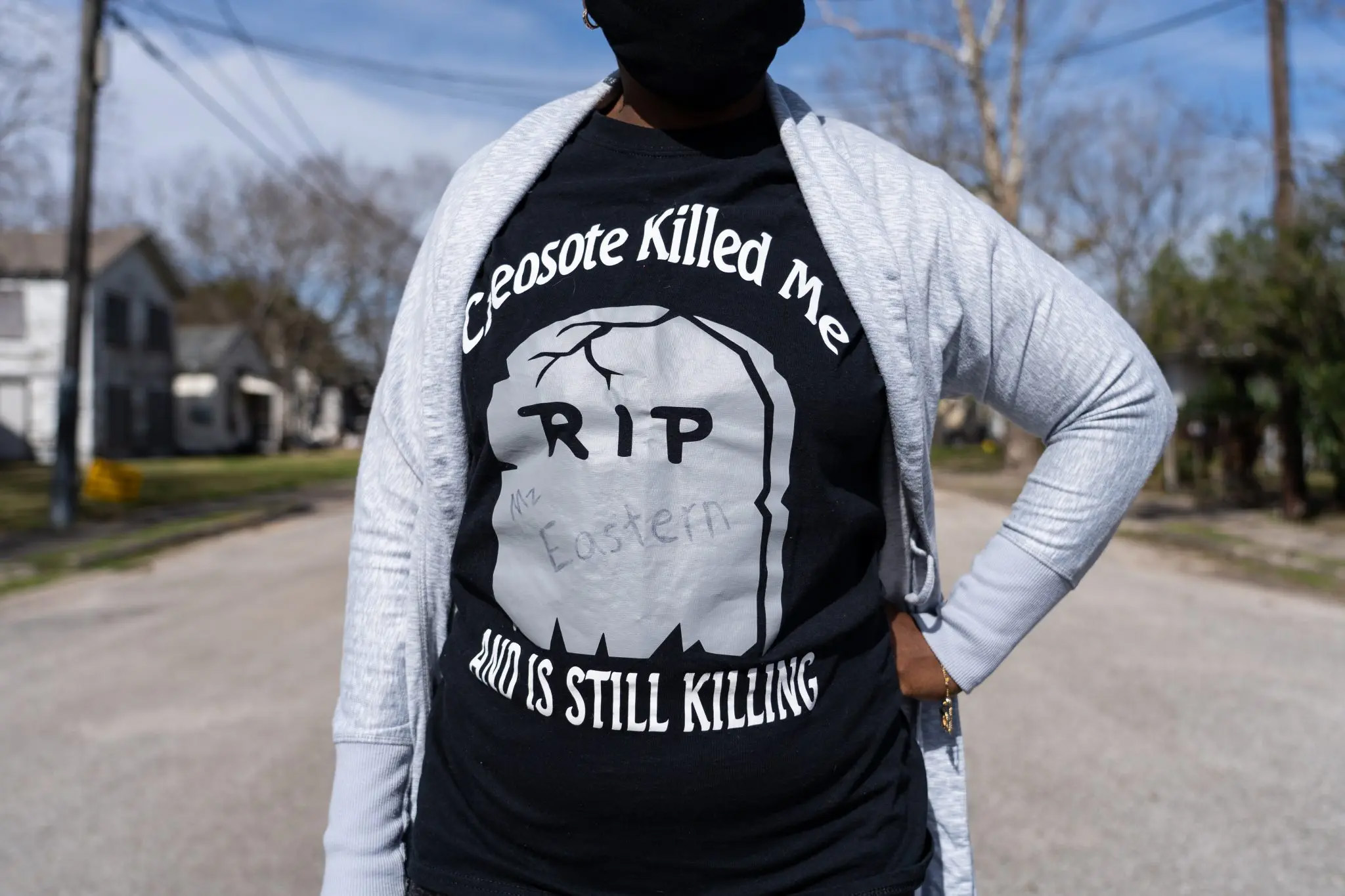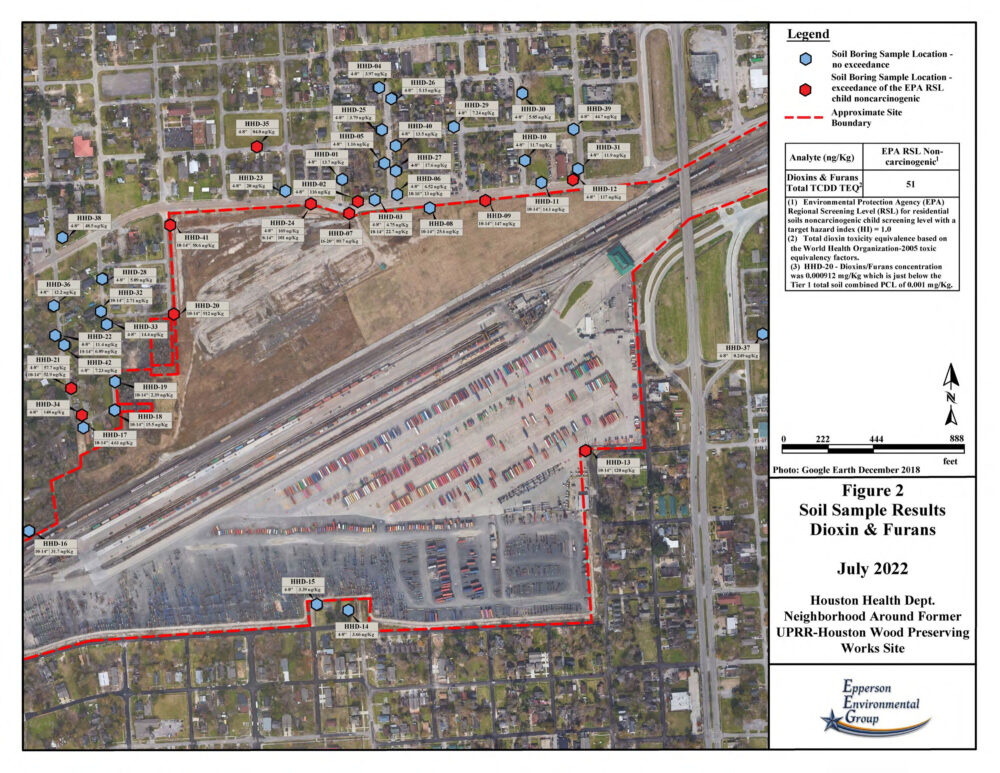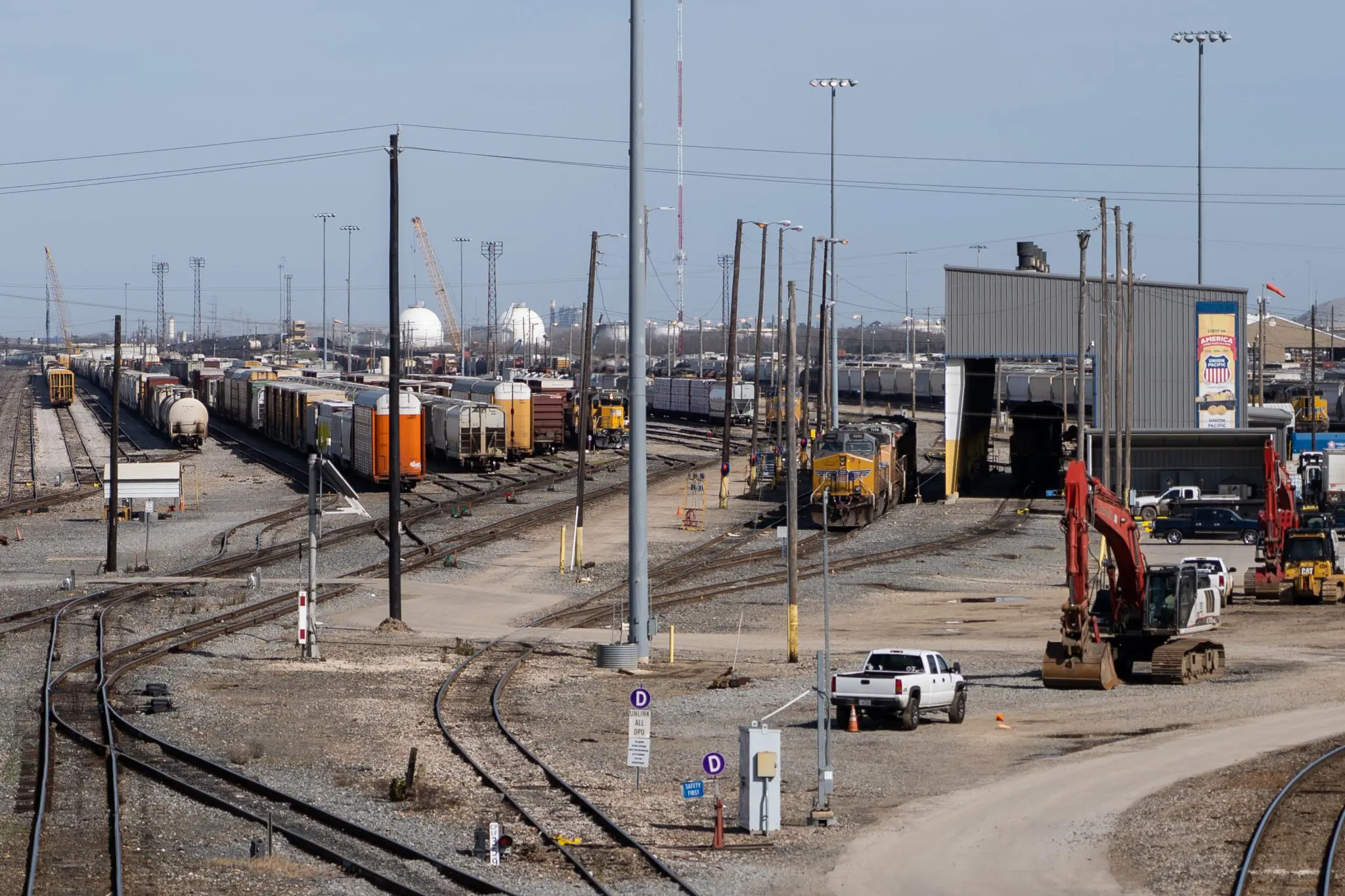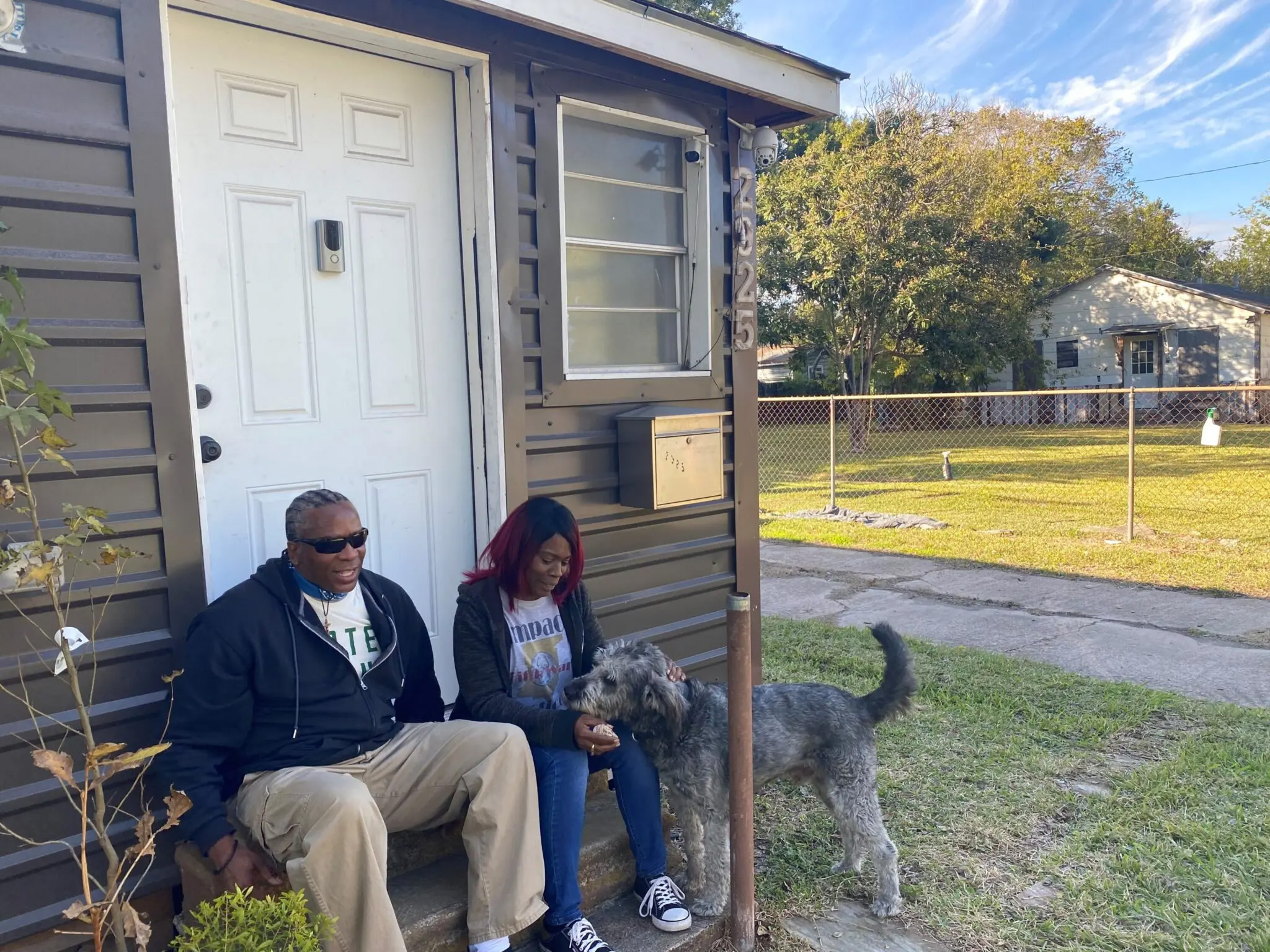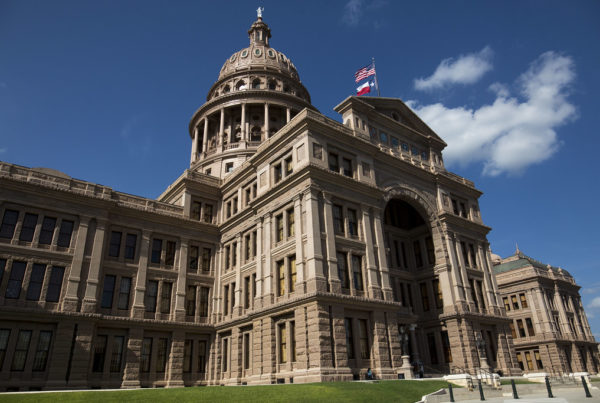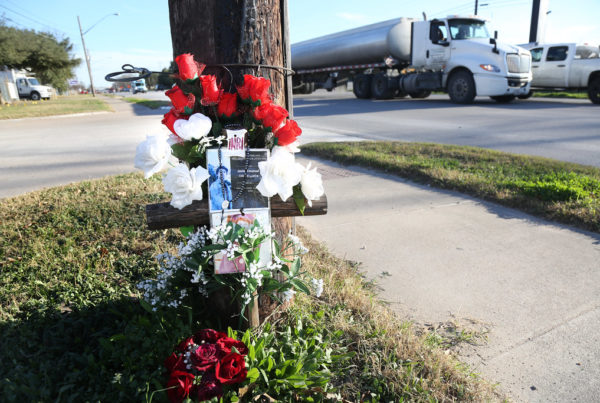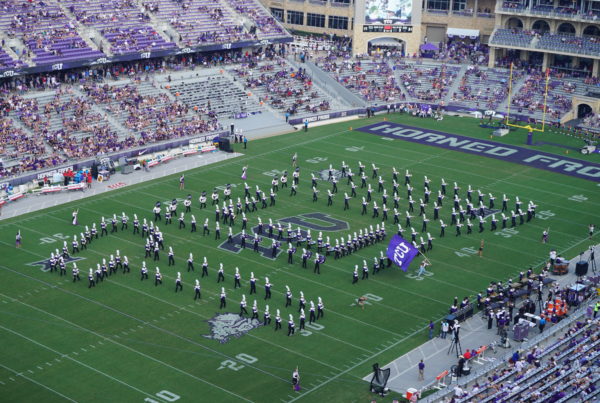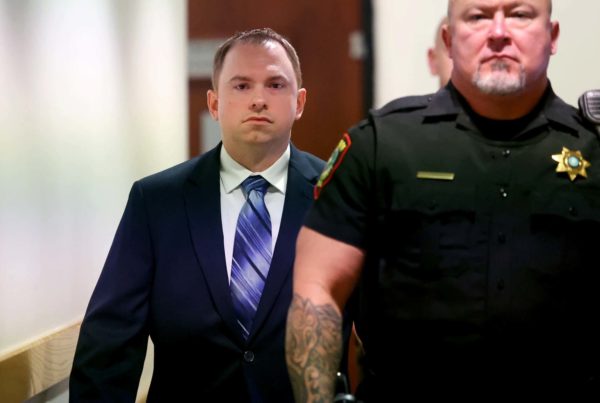Has your health been affected by contamination in your neighborhood? Send us an email: kwatkins@houstonpublicmedia.org
For most of her life, Sandra Edwards has lived on Lavender Street near the railyard in Houston’s Fifth Ward Neighborhood. Growing up she remembers a vibrant community with backyard gardens.
“People here had gardens in the yard,” she said. “When I first moved back here I had a beautiful garden.”
But now, Edwards calls the neighborhood “Death Valley.”
“There’s no life on it,” she said, gesturing down the street as she counted the number of houses where the original residents are still alive. “Five houses on here have life in them on this whole street. Five.”
Edwards herself moved back home after her dad got cancer. She’s now a leader with the activist group Impact Fifth Ward, which has fought for years to get the contamination in the neighborhood cleaned up.
“When you come home to visit your parents, and you see everyone on the street is gone, and all of it is to cancer, you start thinking,” she said.
State health officials have confirmed significantly higher than normal cancer rates in the area for both adults and children. The nearby railyard, now owned by Union Pacific just northeast of downtown Houston, is contaminated with creosote, a likely human carcinogen. Creosote was used decades prior by the previous owner to treat wooden railroad ties and has since seeped into the soil and groundwater.
Though they haven’t been able to make a direct link, experts suspect that contamination is what’s causing the cancer cluster. Now they’re also worried about the presence of a highly toxic, cancer-causing chemical called dioxin, which officials believe could have been formed in the wood treatment process.


